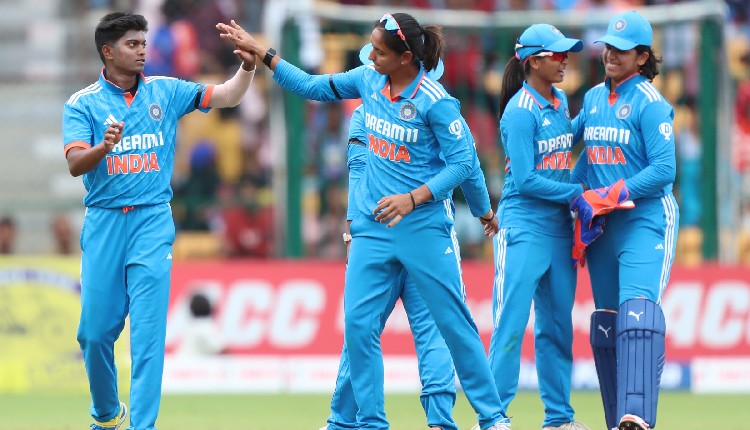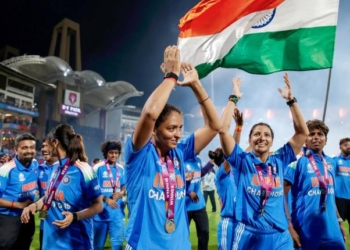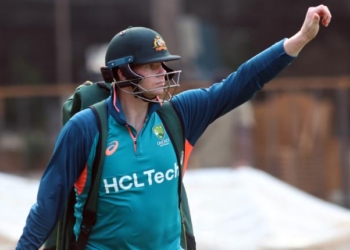New Delhi: Since taking over as India women’s head coach last year, Amol Muzumdar has stressed hugely on fitness and fielding being two non-negotiable aspects in on-field performances.
Since then, there have been improvements in the side’s intensity on-field, but India’s performances have largely oscillated between being good on one day and shoddy in another game.
For example, in the recent T20I series against South Africa at Chennai, India dropped four catches in the first game, giving lifelines to Tazmin Brits and Marizanne Kapp, who went on to score half-centuries. To India’s credit, they bounced back in the next two games, taking 11 catches and dropping two chances overall, and make series scoreline 1-1.
With the Women’s Asia Cup coming up from July 19 and Women’s T20 World Cup happening in Bangladesh in October, India can’t afford to have inconsistencies in a discipline like fielding, which makes a big difference between winning the title and ending second-best in a global competition.
Anjum Chopra, the former India captain, believes the side’s fielding effort has to be such that having a off-day becomes a rarity instead of a regular occurrence. “When you are playing international cricket, it goes without saying that you have to be consistent. There are no two ways that you field well one day and you don’t field well the other day. The rarity needs to be that you had an off-color day.”
“It cannot be that you field well one day and we talk about ‘Wow how you fielded so well one day’. So that consistency has to come. You can always drop a catch. But it’s like you pat your back and say, ‘Okay, it doesn’t matter next time’. Or you say, ‘this is becoming a little too consistent and that’s not the way to go’, because we have already seen the result. Like, what happened after dropping the wicket (those dropped catches in first T20I), we saw the result.”
“So consistency absolutely needs to be there, and it’s not like somebody is doing somebody else a favour by fielding well. That’s your job – you have to score runs, and pick wickets. So the cushion part of it is actually now taken away. There is no comfortable zones for everyone, or for anyone. At the end of the day, if you field well, we’ve seen the result come away.”
“Likewise, if you bowl well, we’ve seen the result come away. If we bat well, like we batted in the second ODI, we saw the results come away. So there’s no guarantee. If we can score 300, the opposition can also score 300. So it’s about an all-round game that obviously the Indian team is also working towards and targeting, much like any other international team,” said Anjum in an exclusive conversation with IANS.
Vice-captain Smriti Mandhana comes into the all-Asian affair on the back of a scintillating purple patch across formats. Scores of 117, 136 and 90 in India’s 3-0 ODI sweep of South Africa fetched her Player of the Series award.
It was followed by the left-handed opener making 149 in the lone Test and scores of 46 and 54 not out in the two T20Is against the Proteas at Chennai. Anjum, who played 158 games for India across all formats from 1995 to 2012, called Smriti’s glorious run against South Africa as brilliant to witness.
“She’s not had a very good past few months coming into this series. For her to work hard and be consistent through all the three formats, that was absolutely brilliant to see. Look, for me, any player who’s scoring runs and getting victories for India is always special.”
“The only part is that we look at more than one people who are contributing to India’s win and that is why we play a team game. One day, Smriti is leading. The other day, Deepti is leading. Third day, Harman is leading. Fourth day, Arundhati is leading.”
“So, the more people put their hand up in getting a team victory, like Pooja Vastrakar put her hand up – that is actually the consistency that you want. But having said that, the way Smriti batted in all three formats, skill has always been there.”
“How the adaptability happened for Smriti to maintain that consistency was the key highlight for me. She obviously is a good player and has an excellent temperament, and that’s why she’s playing for India. But a lot of things that I feel that she altered to having that success were obviously very special and India got the results,” she elaborated.
India are also carrying four traveling reserves in the Asia Cup – left-arm spinners Saika Ishaque and Tanuja Kanwar, as well as batter Shweta Sehrawat and seamer Meghna Singh. Anjum remarked that she would have liked to see more of fast-bowlers in the traveling reserves.
“Saika has been around for a while, so that will help. Tanuja has done well in the shorter formats, while playing for Chandigarh and Punjab in the domestic circuit, and she will also add value (from WPL experience). But I am looking at the fast bowlers. Where are the fast bowlers? Where are the quicks?”
“We have mainly spinners in the reserves. We don’t have fast bowlers or people who have the ability of moving the ball or gentle medium pacers as well, bowling wicket to wicket. Now that is a concern. It’s not that the selectors haven’t picked them. They are not there right now, whether they are unfit ot skill-wise not there.”
“But for me, I would have been happier in this lineup if there was a seam bowler as well. Meghna Singh doesn’t get to play in T20s. She will be a utility in the nets. But is she one of those players who the Indian team is looking at possibly playing if needed?”
“You want someone like Shweta Sehrawat to be around the dressing room because she can pick up a lot by watching international cricket. So that’s excellent; whoever has picked her, it’s nice. It’s not that I am complaining. But I would have wanted to see more of players who possibly can be there around the dressing room in the present. Not about in the future, but in the present,” she concluded.
















